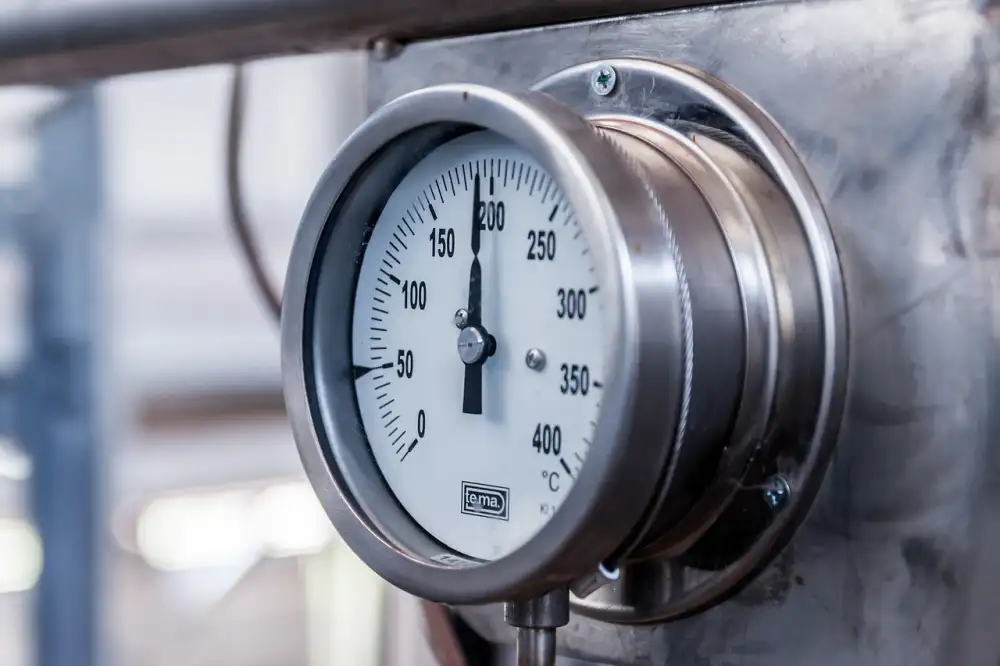Unveiling the Secrets of Gluten Development: Mastering the Windowpane Test for Perfect Dough

- Introduction to the windowpane test
- Explanation of the purpose of the windowpane test
- Step-by-step guide on how to perform the windowpane test
- Importance of gluten development in dough
- Benefits of using the windowpane test in baking
- Tips and tricks for accurate results with the windowpane test
- Common mistakes to avoid when performing the windowpane test
- Conclusion and final thoughts on the windowpane test
Introduction to the windowpane test
Introduction to the windowpane test:
The windowpane test is a crucial technique used in baking to determine the gluten development in dough. Gluten, a protein found in wheat flour, is responsible for giving bread its structure and elasticity. The windowpane test involves stretching a small piece of dough until it becomes thin enough to see through, resembling a translucent windowpane. This test provides valuable insight into the strength and extensibility of the gluten network within the dough. By mastering this test, bakers can ensure they achieve perfect dough consistency and ultimately create exceptional baked goods.
Explanation of the purpose of the windowpane test
The purpose of the windowpane test is to determine the gluten development in dough. Gluten, a protein found in wheat flour, gives dough its elasticity and structure. When gluten develops properly, it creates a network of strands that can trap air bubbles during fermentation and baking, resulting in a light and airy texture. The windowpane test helps bakers assess the strength and elasticity of their dough by stretching a small portion of it to see if it forms a thin, translucent membrane resembling a windowpane. This test allows bakers to gauge whether their dough has reached the desired level of gluten development for optimal baking results.
Step-by-step guide on how to perform the windowpane test
To perform the windowpane test, follow these simple steps:
1. Start by preparing your dough according to your recipe. Knead the dough until it becomes smooth and elastic.
2. Take a small portion of the dough and gently stretch it between your fingers. Gradually pull the dough apart, trying to create a thin, translucent membrane or "windowpane."
3. If the dough stretches easily without tearing and you can see light passing through it, then congratulations! You have achieved proper gluten development.
4. However, if the dough tears before you can create a windowpane or if it appears opaque and breaks easily, it means that more gluten development is needed.
5. In this case, continue kneading the dough for a few more minutes until you achieve the desired elasticity and strength.
6. Repeat the windowpane test periodically during the kneading process to track the progress of gluten development.
Remember, practice makes perfect when it comes to performing the windowpane test. With time and experience, you will become adept at recognizing when your dough has reached its optimal gluten development for outstanding baking results.
Importance of gluten development in dough
Gluten development is a crucial aspect of creating the perfect dough. Gluten, a protein found in wheat flour, provides structure and elasticity to the dough. When gluten is properly developed, it forms a network of strands that trap air bubbles during fermentation and baking, resulting in a light and airy texture.
The strength and elasticity of gluten are essential for dough to rise properly and hold its shape during baking. It allows the dough to stretch without tearing, enabling it to expand as gases are released from yeast or other leavening agents. This development also contributes to the final texture of the baked goods, giving them a desirable chewiness or tenderness.
Without adequate gluten development, the dough may be dense, flat, or lack structure. The resulting baked goods may be tough, dense, or crumbly instead of having a soft and tender crumb. Therefore, achieving optimal gluten development is vital for creating bakery-quality breads, pastries, and other baked treats.
By using the windowpane test during dough preparation, bakers can ensure that they have achieved sufficient gluten development. This simple yet effective technique helps determine if the gluten has been adequately developed by stretching a small piece of dough until it becomes thin enough to see through without tearing.
Mastering the windowpane test allows bakers to gauge when their dough is ready for proofing or shaping. It ensures that the gluten has reached its full potential in terms of strength and elasticity before moving on to the next steps in the baking process.
In summary, understanding the importance of gluten development in dough is key to producing exceptional baked goods. The windowpane test serves as an invaluable tool for bakers in assessing this critical aspect of dough preparation. By mastering this technique, bakers can achieve consistent results and create bakery-worthy treats every time they step into their kitchen.
Benefits of using the windowpane test in baking
The windowpane test is a valuable tool for bakers, offering several benefits in the art of baking. Firstly, it allows bakers to determine the gluten development in their dough accurately. This is crucial as the level of gluten development directly impacts the texture and structure of baked goods.
By performing the windowpane test, bakers can ensure that their dough has reached the desired level of gluten development. This is especially important in recipes that require a strong and elastic dough, such as bread or pizza dough. The test helps achieve the perfect balance between a tender crumb and a well-risen loaf.
Another benefit of using the windowpane test is its ability to prevent over-kneading or under-kneading of dough. Over-kneading can result in tough and dense baked goods, while under-kneading leads to poor structure and uneven rising. The windowpane test provides a visual indication of when to stop kneading, ensuring optimal results every time.
Furthermore, this test helps bakers troubleshoot any issues with their dough. If the dough tears easily during the test, it indicates insufficient gluten development. In such cases, additional kneading may be required to strengthen the gluten network. On the other hand, if the dough does not stretch at all or breaks apart immediately, it suggests an excessive amount of kneading.
In summary, incorporating the windowpane test into your baking routine offers numerous benefits. It allows for precise control over gluten development, resulting in perfectly textured and structured baked goods. It also serves as a guide to avoid common pitfalls like over- or under-kneading. By mastering this simple yet effective technique, bakers can elevate their skills and create exceptional culinary delights every time they step into the kitchen.
Tips and tricks for accurate results with the windowpane test
To ensure accurate results with the windowpane test, here are some tips and tricks to follow:
1. Use high-quality flour: The quality of your flour greatly affects gluten development. Opt for bread flour or all-purpose flour with a higher protein content.
2. Knead properly: Proper kneading is crucial for gluten development. Use the heel of your hand to push the dough away from you, then fold it back towards you. Repeat this motion until the dough becomes smooth and elastic.
3. Rest the dough: After kneading, allow the dough to rest for about 10-15 minutes. This relaxes the gluten strands and makes them easier to stretch during the windowpane test.
4. Test small portions: Instead of testing the entire batch of dough, divide it into smaller portions and perform the windowpane test on each one separately. This allows you to gauge gluten development more accurately.
5. Be gentle when stretching: When performing the windowpane test, be gentle while stretching the dough. Apply even pressure and slowly stretch it without tearing or breaking it.
6. Adjust hydration levels: If your dough consistently fails the windowpane test, it may be due to incorrect hydration levels. Experiment with adjusting water or flour quantities until you achieve optimal results.
By following these tips and tricks, you can ensure more accurate results when using the windowpane test in your baking endeavors.
Common mistakes to avoid when performing the windowpane test
When performing the windowpane test, there are a few common mistakes that should be avoided to ensure accurate results. Firstly, it is important not to over-knead the dough as this can lead to excessive gluten development and a tough texture. Additionally, under-kneading the dough will result in poor gluten formation and a lack of structure.
Another mistake to avoid is using too much flour during the kneading process. This can make the dough dry and stiff, making it difficult to achieve proper gluten development. It is better to add flour gradually as needed until the dough reaches the desired consistency.
Furthermore, rushing through the test can also lead to inaccurate results. Take your time when stretching the dough and check for any tears or breaks in the thin membrane. If there are any weak spots, continue kneading until a smooth and elastic windowpane is achieved.
Lastly, it is crucial to use high-quality ingredients when performing the windowpane test. Using low-protein flours or expired yeast can affect gluten formation and ultimately impact the success of your baked goods.
By avoiding these common mistakes, you can ensure accurate results with the windowpane test and achieve perfect dough for all your baking endeavors.
Conclusion and final thoughts on the windowpane test
In conclusion, the windowpane test is a valuable tool for achieving perfect dough in baking. By assessing gluten development, bakers can ensure their dough has the ideal elasticity and structure necessary for successful results. This simple yet effective test allows bakers to gauge the strength of their dough and make any necessary adjustments before proceeding with the baking process.
The windowpane test provides bakers with confidence and control over their dough, leading to consistently excellent results. It allows them to achieve the desired texture, rise, and crumb in their breads, pastries, and other baked goods. By mastering this technique, bakers can create light and airy loaves or tender and flaky pastries that are sure to impress.
Remember to follow the step-by-step guide closely when performing the windowpane test. Be patient and give your dough enough time to develop gluten fully. Practice makes perfect, so don't be discouraged if you don't get it right on your first try. With experience, you'll become more adept at recognizing the perfect windowpane formation.
Avoid common mistakes such as overworking or underworking the dough during mixing or kneading. These can lead to inaccurate results when performing the windowpane test. Additionally, make sure your hands are clean and free from oil or flour residue before handling the dough as this can affect gluten development.
Incorporating the windowpane test into your baking routine will undoubtedly elevate your skills as a baker. With practice and attention to detail, you'll soon be able to effortlessly assess gluten development in your dough and achieve consistently outstanding results. So go ahead, embrace the wonders of gluten development through the windowpane test and unlock endless possibilities in your baking endeavors!
Published: 16. 11. 2023
Category: Food



